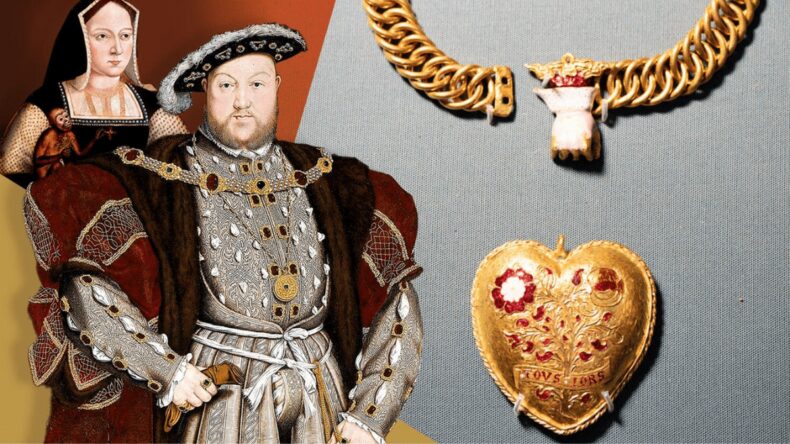On farmland in Birmingham, England, a novice metal detectorist discovered a rare historical royal gold pendant for King Henry VIII and his first wife, Katherine of Aragon.
Table of Contents
About the Golden Pendant
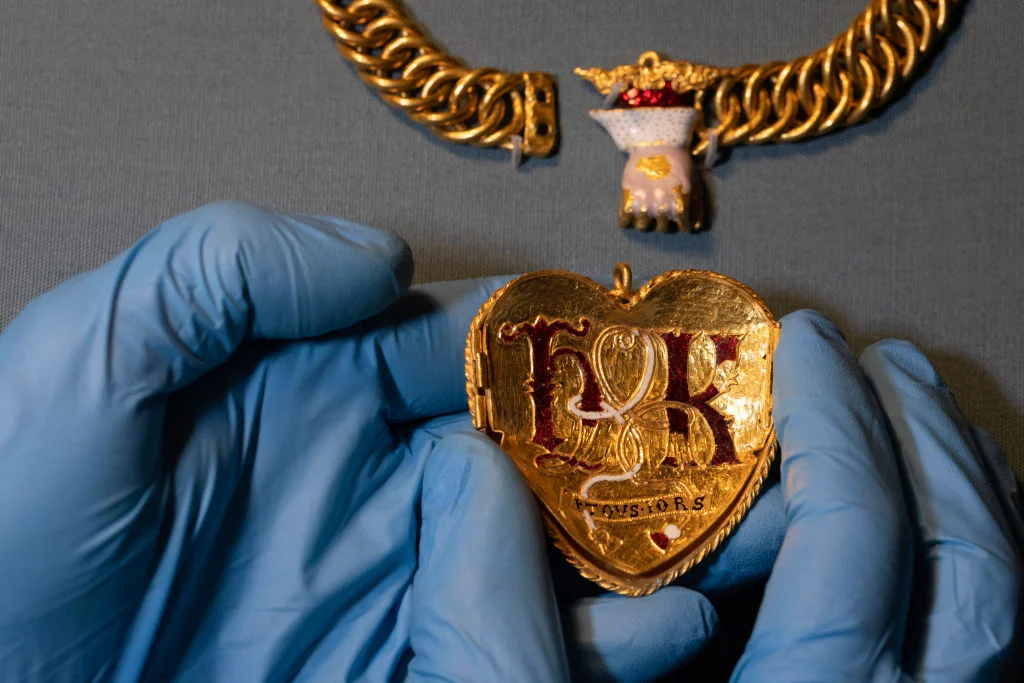
Image Source:- Global News
Clarke found that the piece of jewelry, which bears the initials and insignia of King Henry VIII and his first wife, Katherine of Aragon, dated back more than 500 years.
The royal necklace, which weighs 300 kilos of 24-karat gold and hangs from a 75-link chain, is adorned with a pomegranate, Katherine’s emblem, and a shrub bearing the Tudor rose.
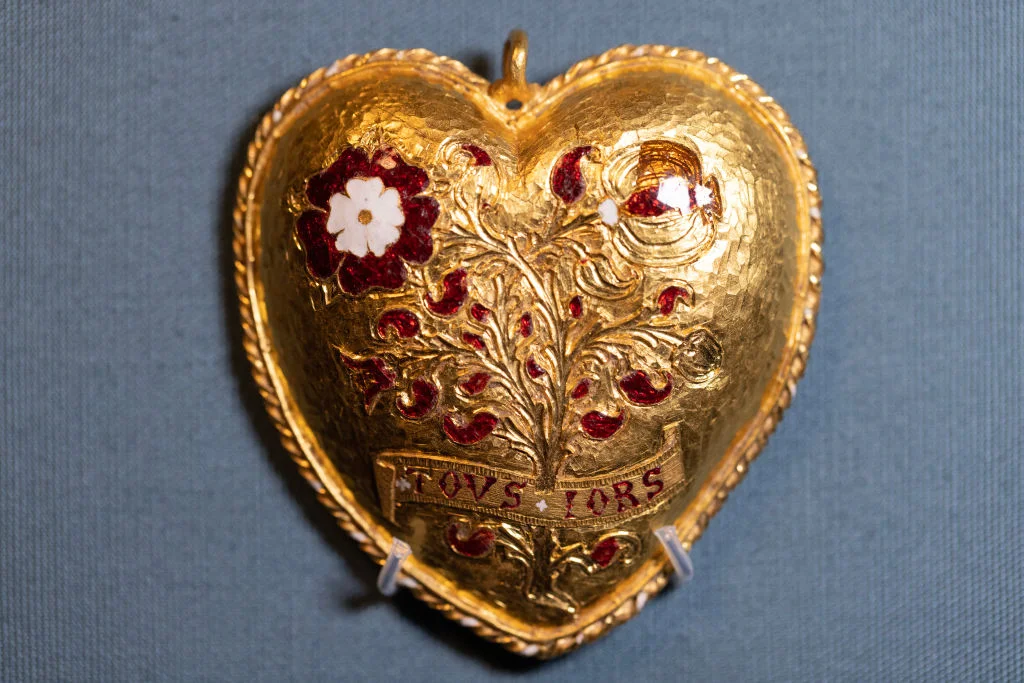
Image Source:- Global News
The words “TOVS + IORS,” a play on the French word “toujours,” which means “always,” are inscribed on both sides of the opposite side along with the initials H and K that are connected by an engraved ribbon.
The Finding Session
Charlie Clarke, a café owner from Birmingham, England, decided to use his metal detector in a friend’s nearby field to get some fresh air and boost his mood in 2019. Charlie was grieving the loss of his dog at the time.

The metal detector had only been in the 34-year-old amateur’s possession for around six months when he discovered an incredible discovery in the Warwickshire field.
Clarke was ready to give up when his detector began blaring loudly after finding largely “trash.” He reached his elbow deep into the ground and pulled out a huge heart-shaped royal pendant that was strung on a gold chain.
Rachel King, curator of Renaissance Europe
“We all pondered: My gosh, is this really happening? Does this seem possible? The British Museum’s Rachel King, curator of Renaissance Europe, spoke to The New York Times about the astonishment the team had when they received the object for examination.
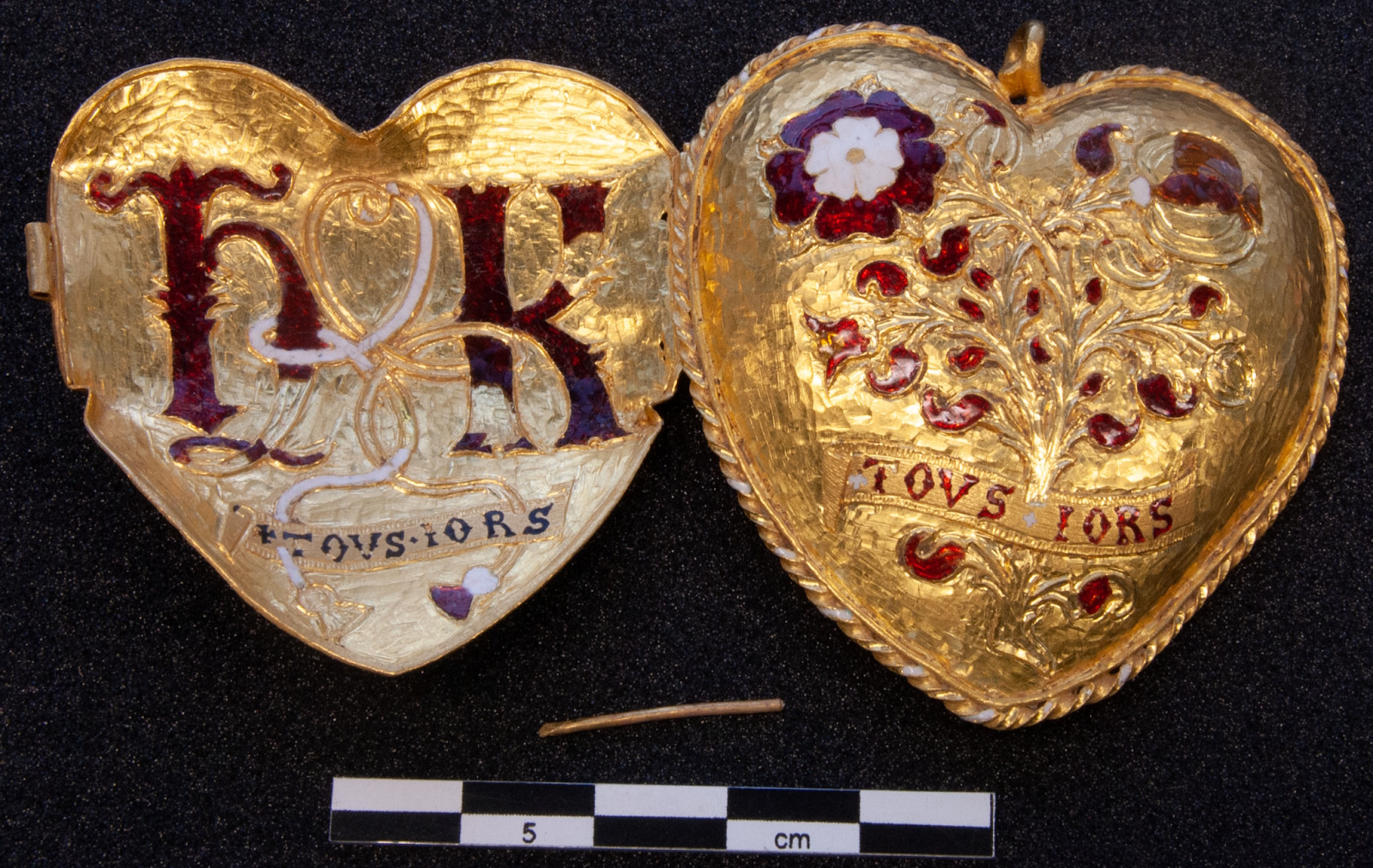
She told The Guardian that initially, several people were dubious. In the past 25 years, nothing of comparable size and significance from the Renaissance has been found.
She was actually so shocked by the discovery that she had to take a seat when she first learned about it.
It was such a problem for Rachel to determine whether this was 19th-century royal jewelry or merely costume jewelry.
Royal Authenticity In Question
The Royal Tudor pendant was put through a number of examinations by the British Museum to assess its authenticity, and they concluded that it is unquestionably real.
King said that the jewelry is still shrouded in mystery. The pendant’s purpose and owner are unknown; however, it has been speculated that it may have been used as a reward or worn during one of the jousts the monarch was renowned for holding at the time.
“This item just emerged from the ground, appearing to have fallen from the sky,”
We have the chance to examine a piece of material that hasn’t gone through all the traditional sorting procedures; in a way, we are receiving raw data.
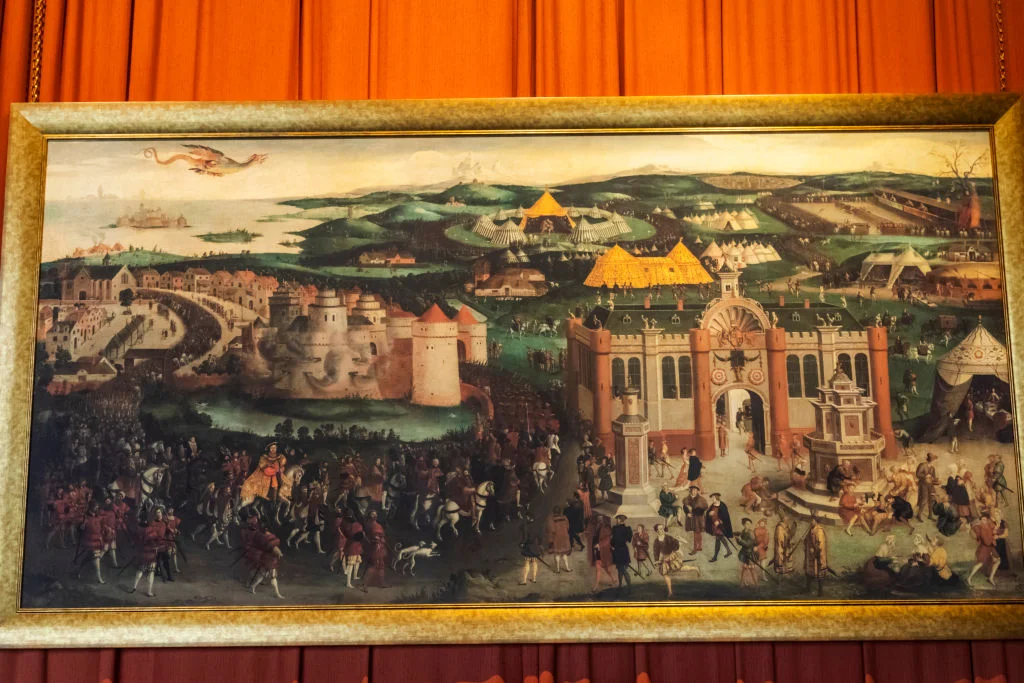
Henry and Katherine are credited with organizing the two-and-a-half-week Field of Cloth of Gold celebration, which honored the ties of friendship and allegiance between France and England. Under the guise of festivity, attendees would take part in jousting, feasts, wrestling contests, and other events.
The Smithsonian estimates that the celebrations would have cost around 10 million crores of rupees in today’s money. Many have speculated that the recently discovered royal necklace may be a remnant from the traveling exhibition.
The British Museum

Source:- Encyclopedia Britannica
According to a news statement describing the royal necklace, it was probably quickly made about 1521 and resembles the horse bards that competed in a joust in Greenwich the same year.
However, King told The Guardian, “its quality is such that it was definitely either commissioned by or associated with a member of the greater nobility or a high-ranking courtier.”
For the time being, the pendant will stay in the British Museum’s custody and be added to their collection of items from archaeological sites that were discovered by ordinary people.
Clarke claims he will divide the profits with the owner of the land where the find was discovered, even if it hasn’t yet been evaluated.
For any metal detectorist, it’s an extraordinary discovery.







